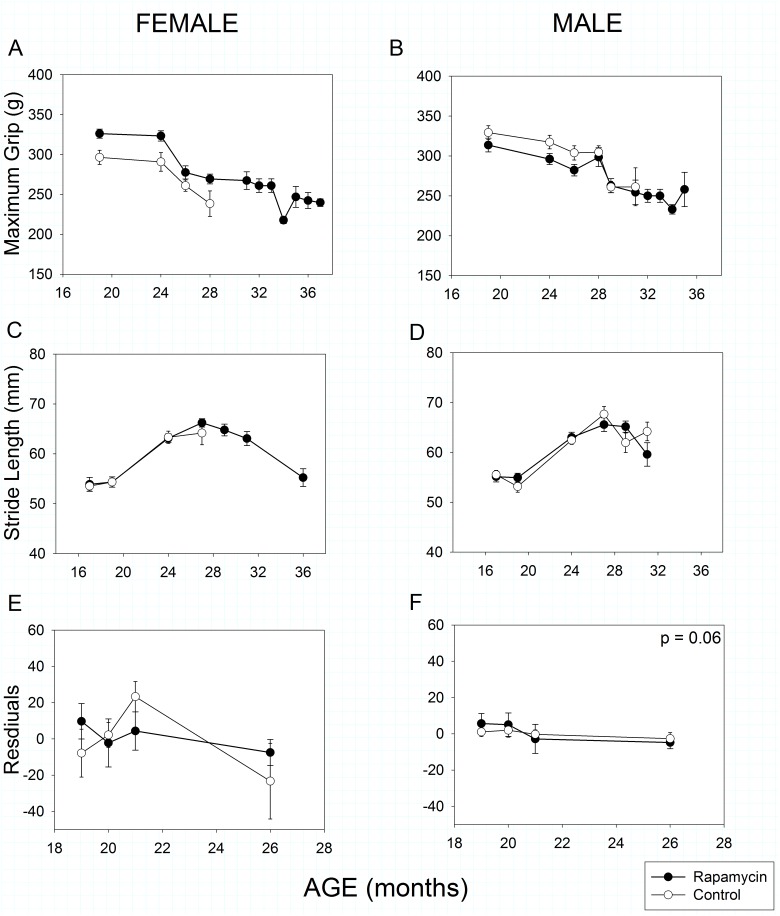Fig 5. Strength, coordination and movement in rapamycin-fed mice (filled circles) compared to controls (hollow circles).
P-values shown on individual panels only if there is a significant treatment effect independent of age. A, B: Grip strength declined significantly with age in all animals, regardless of treatment (p << 0.001); however rapamycin treatment affected males and females differently (treatment x sex, p = 0.003). Rapamycin-fed females had greater grip strength than controls at all ages measured; whereas grip strength in control and rapamycin treated males did not differ. Sample sizes varied, depending on age, control females, n = 17–7; rapamycin females, n = 27–4; control males, n = 22–4; rapamycin males, n = 31–3. C, D: Stride length increased in males and females until 27 months of age and then declined with increasing age (p << 0.001). Rapamycin treatment had no effect on stride length in either sex. Sample sizes varied, depending on age, control females, n = 15–6; rapamycin females, n = 21–5; control males, n = 19–4; rapamycin males, n = 26–9. E, F: Rotarod performance, measured as maximum latency to fall, was significantly affected by body mass (p << 0.001) and so body mass was included as a covariate in the analysis. With the effects of body size removed, females showed no effects of rapamycin treatment and males showed a marginally significant negative effect of rapamycin treatment on rotarod performance. The y-axis shows the residuals of rotarod performance (latency to fall) regressed against body mass. Sample sizes varied, depending on age, control females, n = 11–6; rapamycin females, n = 19–6; control males, n = 13–7; rapamycin males, n = 21–8.

